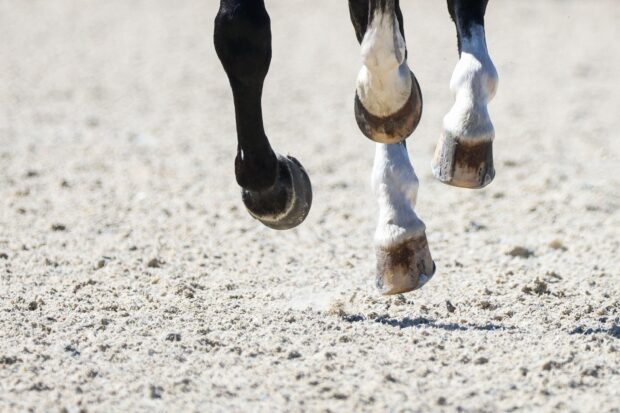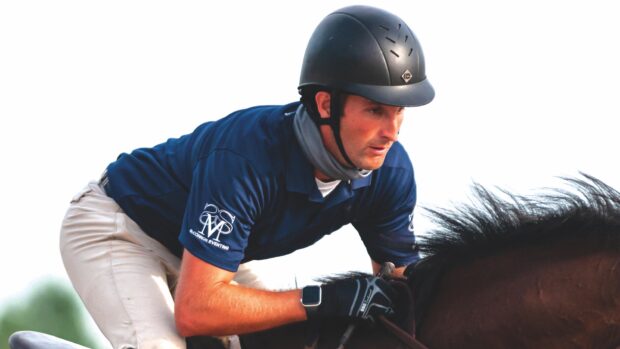British Dressage (BD) said horse welfare is at the “heart of everything” in the sport – as it reviews its policies and sets out “10 commitments to our equine partners”.
BD has published its 2024 members’ handbook, which incorporates rule changes. There are “significant updates” to equine welfare policies, including the BD code of conduct for horse welfare and the launch of a new “charter for the horse”, following a full review carried out in consultation with World Horse Welfare.
The code of conduct covers general welfare and care at home, care when riding, fitness to compete, equine carry capacity and fitness, care at competitions including travel, tack and equipment including fitting, abuse, veterinary, surgical procedures, competitions where a BD steward is present, welfare reporting and penalties.
Good horse management is encouraged based on the five domains of animal welfare (nutrition, environment, health, behavioural interactions and mental state) and the three Fs (freedom, forage and friends). The fitness to compete section states that horses, ponies and riders must be fit, competent and in good health to be allowed to compete – and that “participation in competition is restricted to fit horses and athletes of proven competence, which will be assessed by the judge during the test”.
Spurs, if worn, must be correctly fitted and only used to “refine and support the rider’s leg aid”. There must be no blood visible, no raising or reddening of the skin, and “no sore patches or bruising”. A sore patch is defined as “an area where hair has been rubbed off and the skin is inflamed”.
BD chief executive Jason Brautigam told H&H horse welfare is at the “heart of everything we do in BD so it’s crucial our equine welfare policies capture this ethos to promote best practice across the sport”.
“We want our members to feel proud that they are part of a community that puts horses first,” he said, adding that some of the rules have historically appeared in different parts of the rule book, and BD wanted to bring them all together.
“In doing so, we’ve also added to the existing rules to provide additional advice and guidance around ‘the other 23 hours’ outside competition, not just focusing on what happens in the arena or warm-up.”
The BD charter sets out “10 commitments to our equine partners, each integral to optimum horse welfare and good horsemanship”, and everyone involved in the sport, regardless of their individual role, “has a duty to adhere to these key principles”. The commitments include recognising that the horse is an “intelligent and sentient being and will be sensitive to all physical, emotional and social interactions”.
“Whether riding, coaching or officiating, our members need to be equipped to recognise and fulfil the highest standards of horse care,” said Mr Brautigam.
“With this in mind, we’ll be continuing to develop further training and education in this vitally important area next year and beyond – and that includes our coaches, judges, stewards and organisers too.”
Mr Brautigam added that while BD takes “a zero-tolerance approach to any instances of abuse, our equine welfare policies are not intended to be punitive, but to provide members with the knowledge and understanding required to develop a harmonious partnership with their horses”.
“Our relationship with the horse extends far beyond a combination’s performance in front of the judges – and it is essential that all members exemplify these values in their own actions and behaviours,” he said.
“The physical health and mental wellbeing of our equine partners must remain the highest priority for everyone that owns, trains or competes horses, from grassroots to grand prix. We have to collectively demonstrate that not only do we love our horses, but we provide them with the best care throughout their lives, before, during and after their sporting career.”
For 2024 BD has launched new tests, which will come into force in July, and dark breeches will be allowed in competition, alongside jackets of any colour.
Mr Brautigam told H&H that when considering the appropriate wording for the dress code, the BD board “agreed that we should continue our efforts to make BD as accessible as possible”.
“Dressage is a colourful sport, where we have all types of horses and ponies competing, so we want to allow riders to wear the breeches and jackets of their choice too,” he said.
“With over 19,000 members, and almost 4,000 now competing in our Club category, we want to continue to break down the barriers to participation in dressage and welcome as broad an audience as possible.”
The breeches rule change has been welcomed by many, but there has been some negativity, even though those who want to wear white still can.
“I know some traditionalists might turn their noses up at this but frankly I think we have to move forward and get our priorities right. Every day we ride in coloured breeches so what’s the problem?” British team rider Richard Davison told H&H.
“We should be focusing more on improving our riding, training and horse management standards rather than fussing about the colour of our breeches.”
You might also be interested in:

New dressage tests and rules revealed: what riders need to know

‘Breaking down barriers’ as dark breeches to be allowed in competition

Subscribe to Horse & Hound magazine today – and enjoy unlimited website access all year round
Horse & Hound magazine, out every Thursday, is packed with all the latest news and reports, as well as interviews, specials, nostalgia, vet and training advice. Find how you can enjoy the magazine delivered to your door every week, plus options to upgrade your subscription to access our online service that brings you breaking news and reports as well as other benefits.




